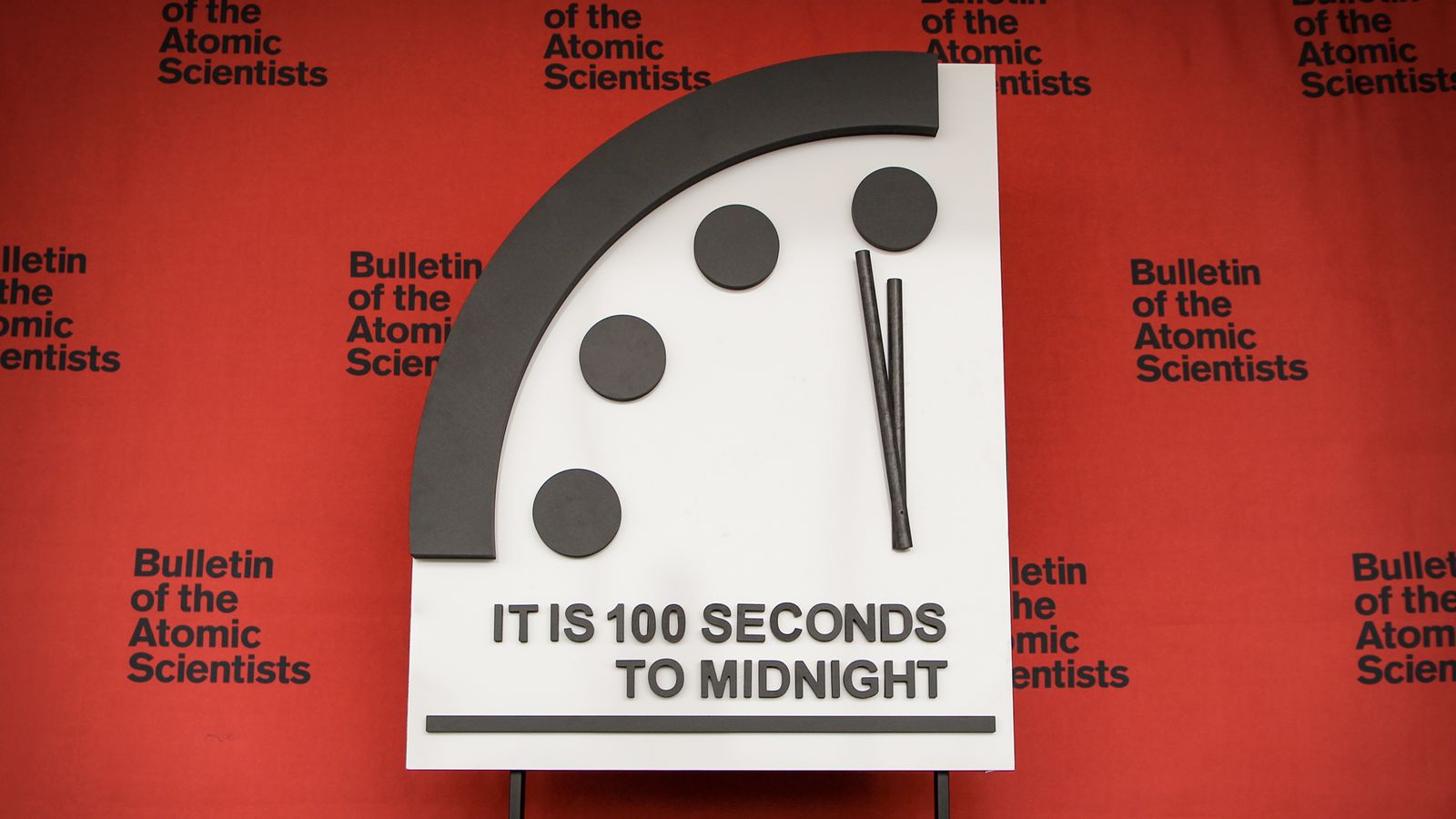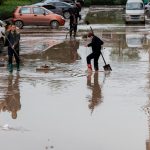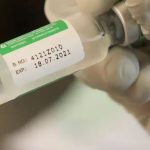The Doomsday Clock has stayed at 100 seconds to midnight for the third year in a row – as the world remains the “closest to apocalypse” it has ever been.
The countdown – a metaphor for global collapse – took into account dangerous threats posed by nuclear weapons, climate change, disruptive technologies and COVID-19.
The clock’s keepers, the Bulletin of the Atomic Scientists’ Science and Security Board, said these factors were exacerbated by “a corrupted information ecosphere that undermines rational decision making”.
‘An extremely dangerous moment’
They said the decision to keep the time the same as last year “does not, by any means, suggest that the international security situation has stabilised”.
“On the contrary, the clock remains the closest it has ever been to civilisation-ending apocalypse because the world remains stuck in an extremely dangerous moment,” they continued.
Professor Scott D Sagan, a member of the bulletin and a political science expert at Stanford University, said “signs of new arms races are clear”.
Hospitals dealing with sicker patients due to delayed treatments during pandemic
COVID: Northern Ireland to ease restrictions on nightclubs and hospitality
COVID-19: People changed behaviour voluntarily, not because of Plan B rules – SAGE scientists told
A statement issued to accompany the Doomsday Clock announcement said last year’s leadership change in the US “provided hope that what seemed like a global race toward catastrophe might be halted and – with renewed US engagement – even reversed”.
However, it was “not enough to reverse negative international security threats”, it said.
US relations with China and Russia “remain tense”, with the countries developing hypersonic missiles and engaging in “nuclear modernisation and expansion efforts”.
Other concerns raised were North Korea’s nuclear and missile expansion, “unsuccessful” attempts to revive the Iran nuclear deal, and Ukraine as a “potential flashpoint”.
Please use Chrome browser for a more accessible video player
More action on climate change ‘needed’
For many countries, a “huge gap” was said to exist between long-term pledges to reduce greenhouse gas emissions and the actions needed right now to achieve those goals.
“The experience of a deepening crisis has animated protests and other civil society expressions of alarm this year,” said Professor Raymond Pierrehumbert, a bulletin member and a physics expert at the University of Oxford.
“These actions focus public attention on climate change and raise its political salience, but whether they will transform policies, investments, and behaviours remains among the most important questions facing global society.”
The worldwide response to COVID-19 was deemed to be “entirely insufficient” after plans for quick global distribution of vaccines “essentially collapsed”, leaving poorer countries largely unvaccinated and allowing new variants to emerge.
Please use Chrome browser for a more accessible video player
‘No safer than last year’
Dr Rachel Bronson, president and chief executive of the Bulletin of the Atomic Scientists, said the board has deemed the world to be “no safer than it was last year at this time”.
She said the world faces a “mixed threat environment, one with positive developments counteracted by accelerating negative ones”.
“The Doomsday Clock continues to hover dangerously, reminding us how much work is needed to ensure a safer and healthier planet,” she added.
“We must continue to push the hands of the clock away from midnight.”
The clock was created in 1947 by experts at the bulletin who helped develop the first atomic bomb as part of the Manhattan Project.
It began at seven minutes to midnight and originally intended to warn of the threat of nuclear Armageddon.
The bulletin is an independent non-profit organisation supported by scientists including 11 Nobel Laureates.






















